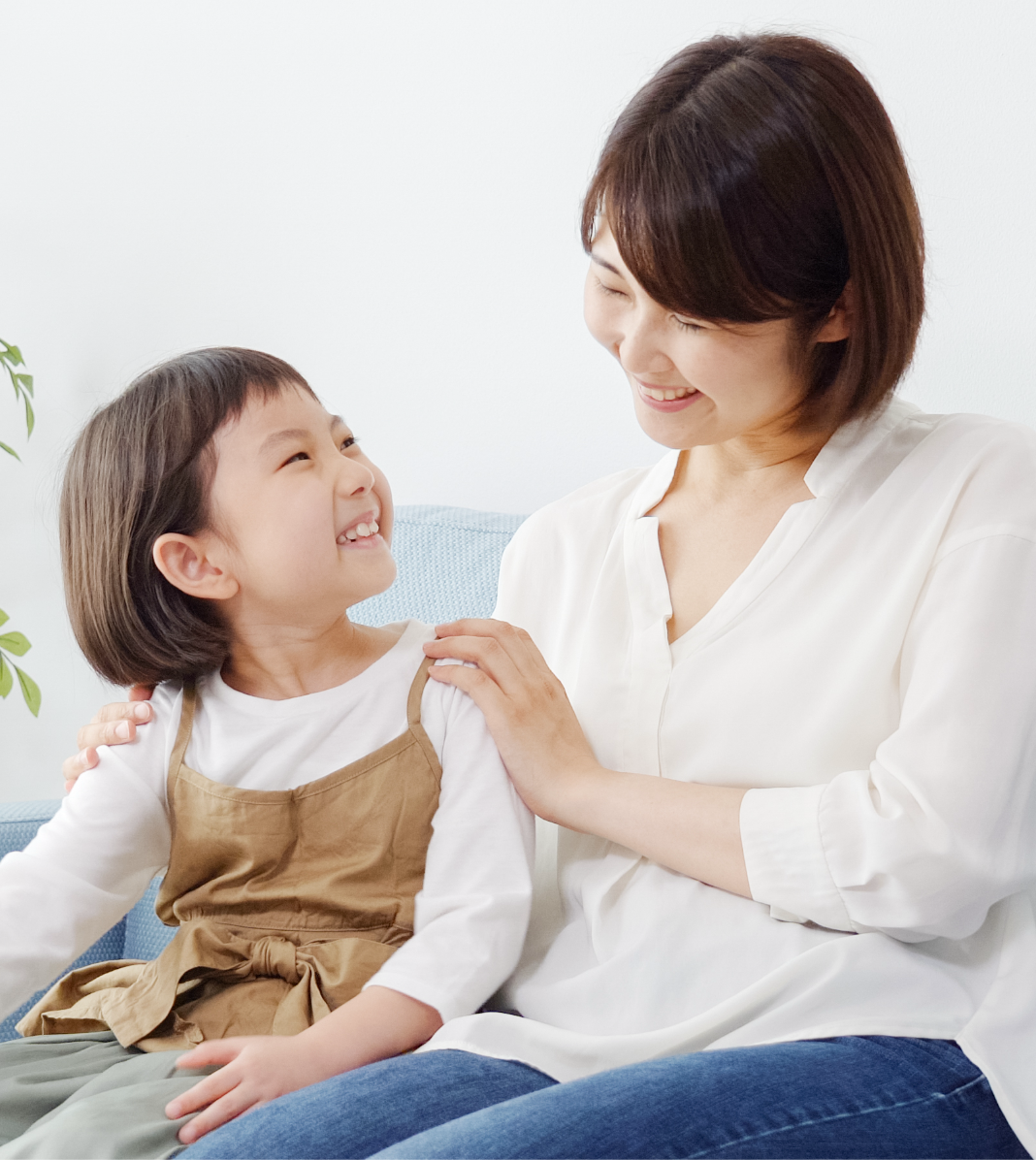We understand that cancer treatments can be stressful for everyone involved. It is okay to ask for help. Here are some things to take note of when considering CAR-T cell therapy:
If you and your child are working or schooling, you will need to plan to take time off work. Talk to your employers or teachers to know what options are available, as it may require about 4 to 8 weeks of personal leave.
*Disclaimer: The organizations and websites listed on this page are maintained by third parties over whom Novartis Pharmaceuticals Corporation has no control. As such, Novartis Pharmaceuticals Corporation makes no representation as to the accuracy or any other aspect of the information supplied by these organizations or contained on these websites.


Deciding on a cancer treatment or therapy option can be daunting. Start a conversation with your child’s care team by asking questions that you or your loved ones may have about CAR-T cell therapy. By doing so, you can learn more about the options available and make a more informed decision when considering the next steps.
Begin by describing your child’s treatment history so that they can discuss or refer you or your loved one to the best treatment option.
Next, you may consider asking the following questions across different treatment stages to help you decide if CAR-T cell therapy is right for your child.
Download the handy doctor discussion guide to determine with your doctor if CAR-T cell therapy is right for you or the child you are caring for.

A healthy and balanced lifestyle can help your child feel better and stronger1 before, during, and after cancer treatment. Encouraging your child to stay active by doing regular exercises has a wide range of benefits.2 This includes maintaining heart and lung health, building muscles, improving sleep, reducing cancer-related fatigue, and boosting emotional well-being.
Most nutritionists agree that eating a mix of foods helps ensure your child gets the nutrition they need. A nutritious diet rich in calories, protein, vitamins, and minerals gives the body energy to recover fully.3 Furthermore, it supports the immune system, reduces the risk for some diseases, and helps the body replace blood cells and healthy tissues damaged from cancer treatment.
In general, children with cancer have an increased need for protein, carbohydrates, and healthy fats.4 A balanced diet5 includes:

When your child undergoes cancer treatment, their taste and appetite6 may transform dramatically. Hence, getting them to eat anything can be challenging. Here are some tips to help your child eat better:
The nutritional, physical and emotional needs of children with cancer may vary individually. Talk to your care team and a registered dietitian to better understand your child’s specific needs and recommended eating and exercise plan.
While coping and caring for your child during their treatments can be stressful, practicing mindfulness may help reduce stress and anxiety. It may not be easy, but mindfulness can help you and your child focus on the present and bring hope into your everyday lives.
Explore additional articles and videos or resources to support you on your treatment journey:
There are 5 CAR-T cell therapies that the FDA has approved. These include8:
They are approved to treat these types of cancers:
Yes, CAR-T therapy remains as an option for patients in need of a potentially curative therapy to treat their cancers. Speak to your child’s care team to understand the steps their cancer treatment centers have taken to ensure the health and safety of their patients.9
While there is still limited information about the effectiveness of these vaccines in patients with active cancer and who are on immunosuppressive therapies, many medical experts have shared that these vaccines are safe for use in cancer patients. There is no data at present to show that COVID- 19 vaccines have any impact on patients’ cancers.10
However, it is important to speak to your child’s care team about your child’s immune system to make a more informed decision.
Yes, make a list of the medication (prescribed or over the counter) and supplements your child is taking. You will also need to inform your child’s care team how much and how often your child is taking them and what it is treating.11
CAR-T patients generally do not lose their hair while undergoing therapy.12
Perhaps 4-6 weeks post treatment. Your care team will establish a monitoring plan for ongoing follow-ups. The Food and Drug Administration (FDA) recommends that all patients be followed for 15 years after infusion.13
CAR-T cell therapy continues to be an innovative immunotherapy option for cancer patients. This potentially curative treatment is also currently being studied to treat other types of cancers which don’t respond to or have returned after treatment, including follicular lymphoma (FL), chronic lymphocytic leukemia (CLL), and multiple myeloma (MM).14
Other CAR-T cell therapies are being studied to target different types of cancer, such as brain tumors, breast cancer, acute myeloid leukemia, Hodgkin’s lymphoma, neuroblastoma, and pancreatic cancer. Learn more about these on clinicaltrials.gov.
Why good nutrition is important. (n.d.). Retrieved March 11, 2022, from Cancer.org website: https://www.cancer.org/treatment/children-and- cancer/when-your-child-has-cancer/nutrition/why-nutrition-is-important.html
7 Ways Children With Cancer Benefit From Physical Activity. (2021, July 27). Retrieved March 11, 2022, from Choose PT website: https://www.choosept.com/health-tips/7-ways-children-cancer-benefit-physical-activity
What children with cancer need: Nutrients. (n.d.). Retrieved March 11, 2022, from Cancer.org website: https://www.cancer.org/treatment/children-and- cancer/when-your-child-has cancer/nutrition/what-children-with-cancer-need.html
Nutritional needs for kids with cancer. (n.d.). Retrieved March 11, 2022, from Kidshealth.org website: https://kidshealth.org/en/parents/cancer- nutrition.html
Food and nutrition. (n.d.). Retrieved March 11, 2022, from Lls.org website: https://www.lls.org/managing-your-cancer/food-and-nutrition
Dell Children’s Medical Center of Central Texas. (2017, April 17). How to help children with leukemia eat after treatments. Retrieved March 11, 2022, from Children’s Blood & Cancer Center website: https://www.dellchildrens.net/childrens-blood-and-cancer-center/2017/04/17/help-children-leukemia-eat- treatments/
Ways to help your child take in more protein and calories. (n.d.). Retrieved March 11, 2022, from Cancer.org website: https://www.cancer.org/treatment/ children-and-cancer/when-your-child-has-cancer/nutrition/ways-to-increase-protein-and-calories.html
CAR T-cell therapy: Who might benefit? (n.d.). Retrieved March 11, 2022, from WebMD website: https://www.webmd.com/cancer/features/who- benefits-car-t-cell-therapy
Bachanova, V., Bishop, M. R., Dahi, P., Dholaria, B., Grupp, S. A., Hayes-Lattin, B., … CAR T-cell Consortium. (2020). Chimeric antigen receptor T cell therapy during the COVID-19 pandemic. Biology of Blood and Marrow Transplantation: Journal of the American Society for Blood and Marrow Transplantation, 26(7), 1239–1246. doi:10.1016/j.bbmt.2020.04.008
COVID-19 vaccines in people with cancer.(n.d.).Retrieved March 11,2022,from Cancer.org website:https://www.cancer.org/treatment/treatments-and- side-effects/physical-side-effects/low-blood-counts/infections/covid-19-vaccines-in-people-with-cancer.html
CAR T Patient & Caregiver Guide. (n.d.). Retrieved March 11, 2022, from Cancer Support Community website: https://www.cancersupportcommunity.org/ sites/default/files/fsac/CAR_T_Patient_and_Caregiver_Guide.pdf
Frequently asked questions about CART-cell therapy.(n.d.).Retrieved March 11,2022,from Uchicagomedicine.org website:https:// www.uchicagomedicine.org/cancer/types-treatments/car-t-cell-therapy/frequently-asked-questions
A Caregiver’s Guide to Kymriah Therapy, 2019 (11/19, KYM-1223352) – extracted from Novartis resource
CAR-T cell therapy: Pioneering cancer therapy.(n.d.).Retrieved March 11,2022,from Novartis website:https://www.novartis.com/research- development/technology-platforms/cell-therapy/car-t-cell-therapy-and-beyond/car-t-cell-therapy-pioneering-cancer-therapy
Disclaimer:This is global website for information on CAR-T Cell Therapy and is intended for Patients and Caregivers outside the US. The information on the site is not country specific and may contain information that is outside the approved indication in the country in which you are located.